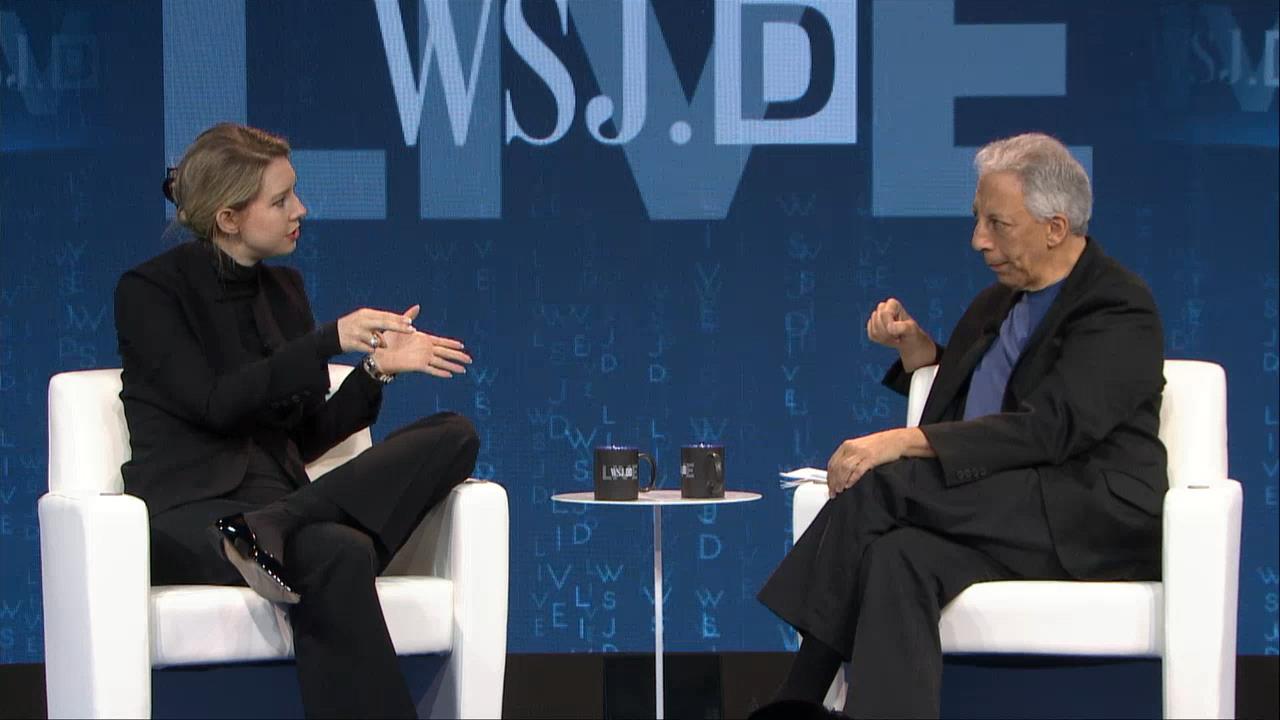High rates of variability from one drop to another raise questions about the reliability of point of care testing equipment and companies that collect lab specimens only with finger sticks
Since last fall, one news report after another has come out with bad news for Theranos Inc., the high-profile medical laboratory company. The reports have ranged from dissatisfaction among Theranos’ partners, such as Walgreens and Capital BlueCross, to failed inspection reports from the federal Centers for Medicare and Medicaid Services (CMS) and the U.S. Food and Drug Administration (FDA).
In response, the embattled lab company in Palo Alto, Calif., has maintained that it is doing everything it can to correct any deficiencies in its clinical laboratory testing methods and to ensure its partners that its processes are scientifically sound and its methods valid.
Walgreens Said to Be Considered Ending Business Relationship with Theranos
On February 29, 2016, The Financial Times reported that Walgreens was considering ending its relationship with Theranos. This caused observers to question whether Theranos would be able to collect blood samples or generate revenue if Walgreens were to dump the lab company.
In the first week in February, 2016, Bloomberg reported that Theranos asked for and received an extra week to respond to the findings in a clinical laboratory improvement amendments (CLIA) inspection report. The findings were delivered in a letter from the Department of Health and Human Services (HHS) that was addressed to Sunil Dhawan, MD, Director, Theranos.
At that time, Dhawan was serving as the lab’s Medical Director. He was a Dermatologist with “no background in laboratory science,” according to a report in Fortune magazine. The letter from HHS was based on the negative results of a November 20, 2015, onsite survey of the Theranos medical laboratory facility in Newark, Calif.
During the inspection, CMS inspectors found five major infractions that violate federal law governing clinical laboratory operations, according to John Carreyrou of The Wall Street Journal (WSJ). CMS discovered “deficient practices” that “pose immediate jeopardy to patient health and safety,” he wrote.

On October 21, 2015, just days after the first story about Theranos was published by The Wall Street Journal, Theranos CEO Elizabeth Holmes (left) appeared at the WSJDLive 2015 conference in New York City. She was interviewed by WSJ Global Tech Editor Jonathan Krim (right). (Photo copyright: The Wall Street Journal.)
On January 27, 2016, following receipt of the letter from HHS, Theranos issued a statement about one response it took to the findings of the federal agency. “As part of our review, we have made policy and personnel changes in our Newark, Calif., lab, including adding a new CLIA lab director with the conclusion of our lab director search. Our new lab director, Dr. Kingshuk Das, is a board-certified pathologist and MD and, among other accomplishments, an associate medical director of UCLA’s clinical laboratories. We have also brought on a new clinical consultant, Dr. Waldo Concepcion, the Chief of Clinical Transplantation and Professor of Surgery at Stanford University Medical Center,” stated Theranos.
Capital BlueCross Suspends Theranos Blood Draw Operations in Response to HHS Findings
That same week, Carreyrou of the WSJ reported in another article that Capital BlueCross, a health plan in Harrisburg, Pa., asked Theranos to stop drawing blood at its retail store in Enola, Pa., “until further notice.”
The announcement from Capital BlueCross followed an announcement just days earlier that Walgreens Boots Alliance Inc. (NASDAQ:WBA), the multinational company that operates Walgreens stores in the United States, would temporarily close its Theranos blood-draw site in its store in Palo Alto, Calif., the WSJ reported.
Walgreens also operates Theranos blood-collection sites in 40 stores in Arizona and said that blood samples collected from its Arizona customers would not be sent for testing to the Theranos lab in Newark, California. Walgreens said this action would continue until all issues CMS raised “have been fully resolved.”
Last year, Theranos opened a new clinical laboratory in Scottsdale, Arizona.
FDA Declared Theranos Blood-Vial Collection System an “Uncleared Medical Device”
Also in February, Theranos faced questions about whether it had validated its testing methods. Validation of its methods is a significant question for Theranos given that the FDA sent inspectors to the Newark and Palo Alto labs in August and September and reported that the company’s blood-vial collection system was an “uncleared medical device,” according the WSJ article.
At the time, The Wall Street Journal’s Carreyrou wrote, “The Food and Drug Administration declared the tiny vials used by Theranos Inc. to collect finger-pricked blood from patients an ‘uncleared medical device’ that the laboratory company was shipping across state lines.”
Since then, reporters covering the story have reported that Theranos has not had any validation studies done at the Cleveland Clinic or at Intermountain Healthcare, two health systems that earlier were thought to be working with Theranos on its blood-vial collection technology.
Intermountain Healthcare Delayed Pilot Study Following HHS Letter to Theranos Noting CLIA Violations
In October, Bloomberg News reported that Theranos and Intermountain Healthcare, a 22-hospital system in Utah, were planning to use Theranos’ technology in one clinic and compare those results against more traditional blood-testing technology in another clinic. But at the end of January, Bloomberg reported that Intermountain Healthcare had not yet scheduled a pilot study. “We’ll certainly evaluate this and all information before beginning a pilot,” an Intermountain Healthcare spokesman told Bloomberg.
A similar report came from the Cleveland Clinic. Earlier, Theranos asked the Cleveland Clinic to compare its technology against traditional blood-drawing methods, Bloomberg said. At the end of January, however, Bloomberg reported that the Cleveland Clinic, had not started such a program.
Theranos CEO Elizabeth Holmes on October 21, 2015, at the WSJDLive conference in Laguna Beach, Calif., discussing her company’s statement that the WSJ article was “factually and scientifically erroneous and grounded in baseless assertions by inexperienced and disgruntled former employees and industry incumbents.” (Video copyright: The Wall Street Journal.)
One Blood Drop is Not Necessarily Like Another, Rice University Study Reveals
Late last month, The New York Times reported on another issue related to Theranos’ testing methods, which Dark Daily reported on in November, 2015. (See Dark Daily, “Rice University Researchers Publish Study about Variation in Drop-to-Drop Samples of Capillary Blood Collected by Fingerprick and Used for Clinical Laboratory Testing,” November, 30, 2015.)
The study, completed by bioengineer researchers at Rice University and published in the December issue of The American Journal of Clinical Pathology (AJCP), found that “ blood parameters between the successive drops of blood obtained from one fingerprick” vary substantially. The variation affected test results when assessing a patient’s hemoglobin, platelet, and white blood cell counts, The New York Times reported.

At the Rice University Department of Bioengineering, a research team working on “novel, low-cost” diagnostic test solutions for anemia, platelet, and white blood cells testing “in low-resource settings” were getting discordant results when using capillary blood specimens. This led them to conduct a study on the variability of consecutive blood drop specimens collected from a single fingerprick. Pictured above is Meaghan Bond, one of the authors of the study, which was published in the December issue of the American Journal of Clinical Pathology (AJCP). (Photo copyright: Jeff Fitlow/Rice University.)
Theranos Incurring Losses for High Complexity Tests, According to UCSF
The Carreyrou article in the WSJ also reported that Theranos had been sending high complexity tests to Associated Regional and University Pathologists, Inc. (ARUP) Laboratories, in Salt Lake City, Utah, and to the clinical laboratory at the University of California San Francisco (UCSF). Since mid-November, 2015, Theranos sent more than 1,200 tests to UCSF, including blood counts and tests for prostate-specific antigen, the WSJ reported.
“UCSF charges Theranos more than $300 for a comprehensive metabolic panel,” said a person familiar with the matter in the WSJ article. “Theranos’ website shows that patients who get the same test at one of the company’s blood-draw sites pay just $7.19. A comparison of all the tests done by UCSF for Theranos shows that the company appears to be incurring losses on many of those tests,” the WSJ’s Carreyrou and Christopher Weaver wrote.
A Stat News article questioned whether Theranos can “regain the confidence” of its stakeholders. The article’s author offered the following “clues” as “bellwethers” for seeking tell-tale signs that an “irreversible decline” is underway at Theranos:
1. Can [Theranos] satisfy government regulators?
2. Are pharmacies distancing themselves from Theranos?
3. Does a top hospital’s study validate Theranos’ technology?
4. Does Theranos have enough cash to stay afloat?
5. Are hotshot new hires and board members running for the hills?
The first expose of Theranos that became national news was published by The Wall Street Journal on October 15, 2015. From that date forward, Theranos has vociferously defended itself. It has provided detailed statements and rebuttals to the various news stories on its website. These responses and statements can be read in full at the Theranos website, under “news” or by using this URL: https://www.theranos.com/news.
—Joseph Burns
Related Information:
Walgreens Seeks to Cut Ties with Theranos
Theranos Gets Additional Week to Respond to U.S. Inspection
Theranos Lab Practices Pose Risk to Patient Health, Regulators Say
Theranos Stops Drawing Blood from Patients at Capital BlueCross Pennsylvania Store
FDA Inspectors Call Theranos Blood Vial ‘Uncleared Medical Device’
Doctor Questions Theranos as His Employer Plans Lab-Test Pilot
Walgreens Suspends Theranos California Lab After U.S. Report
Theranos CEO Elizabeth Holmes Goes on Stage at WSJDLive 2015 — Live Blog
Not Every Drop of a Person’s Blood Is the Same, a Study Says
Blood Test Results Vary from Drop to Drop in Fingerprick Tests
Hot Startup Theranos Has Struggled with Its Blood-Test Technology
The Dark Report: MIGHT LAWSUITS COME NEXT IN THE THERANOS STORY?



